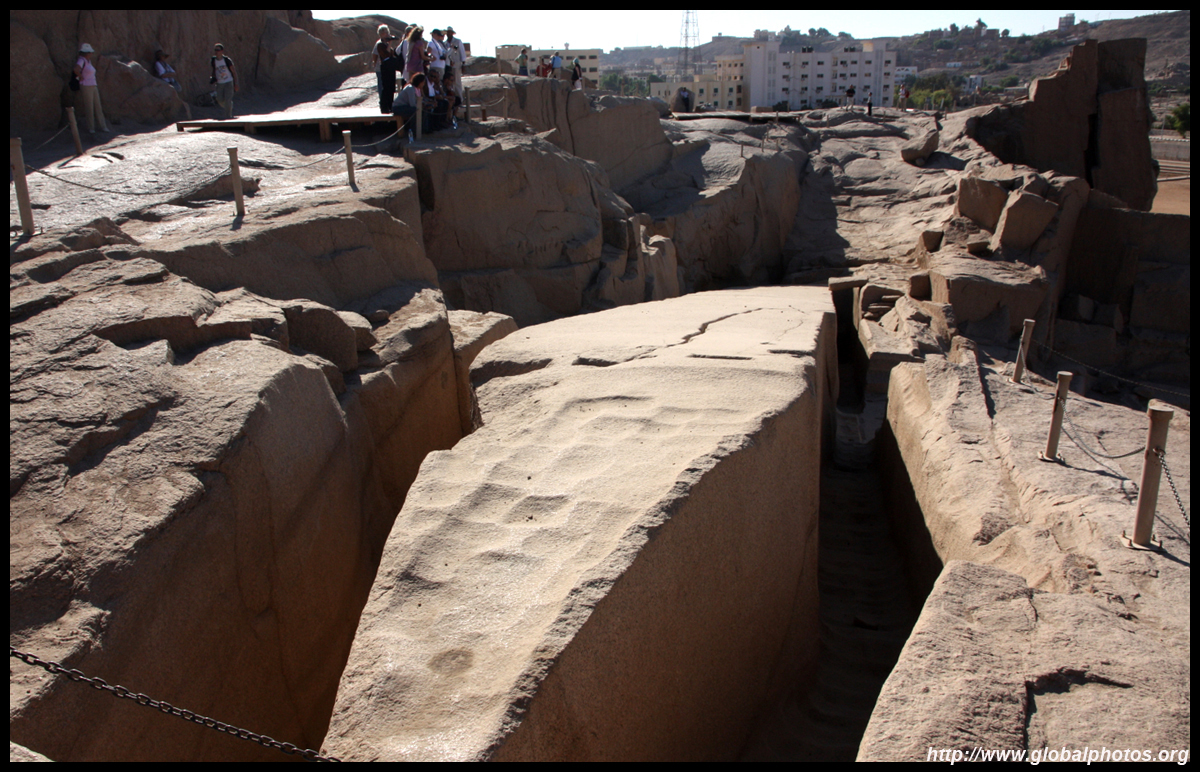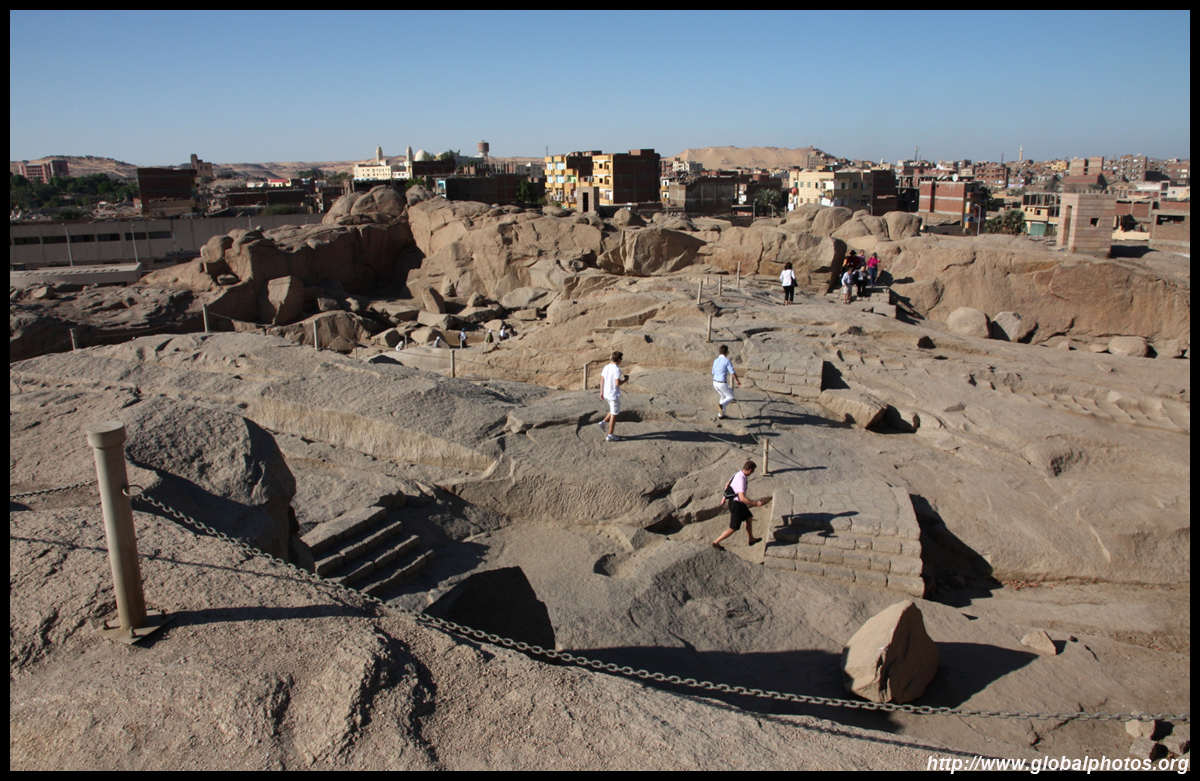My Nile cruise ended in Aswan, Egypt's southernmost city. This was an important military position to guard the southern border since ancient times. The Nile divides the desert from the rest of town. Here, the sand shines against the afternoon sun on the west bank.




















Aswan is historically famous for its stone quarries, supplying granite to statues, obelisks, and other grand monuments around Egypt. At this ancient quarry, an unfinished obelisk rests after artisans found a flaw with the stone and abandoned the work. Had it been built full, it would have stood over 40m tall.

The ancient Egyptians used an ingenious way to carve the rock into various shapes. They made holes in the rock, then stuffed them with pieces of wood, which were then soaked with water to expand.







The city has approached the quarry over the years.





An optional excursion out of Aswan is to visit Abu Simbel, which requires a very early start with police escort in a convoy for the drive south. Long before sunrise, tour buses gathered at the police station in Aswan to get ready for the trip.
The Temple of Ramses II was carved out of a cliff in the 13th century BC with 4 imposing statues of Ramses II in the facade. The temple was rediscovered by a Swiss explorer in 1813, but had to be relocated as Lake Nasser's water level rose in the 1960s. UNESCO led this effort to move the temple further away and 65m above its original position.
With a 3 hour drive each way, I grabbed the pillow from my room and slept a bit as we rumbled through the desert.



While it may seem silly to spend 7 hours on the road for 2 hours at this temple, the sight of the huge statues was exciting to make the long journey worth it.




Notice on the left side there is a statue with a missing head. It was lost in an earthquake back in 27 BC.